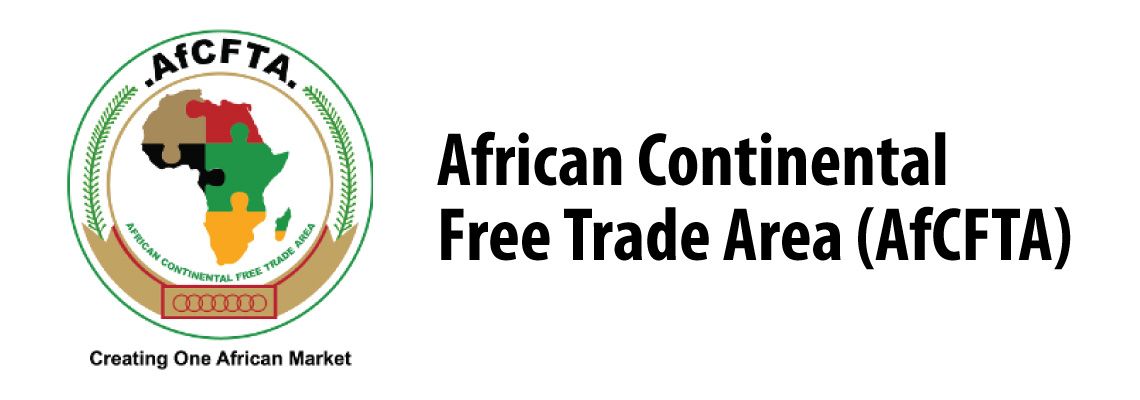The African Continental Free Trade Area (AfCFTA) has been applauded as a great initiative in fostering cross-border trade within Africa, an upgrade from existing Regional Economic Communities (RECs), and SADC SMEs stand to benefit from this agreement. Informal cross-border trade has been a major characteristic of the African economic and social landscape, representing up to 40% of regional trade. These traders have been party to a number of RECs, some of which they benefited from and some which have probably failed to cater for them.
Adding to the list of these trade initiatives is the AfCFTA, and this article is going to explore ways in which cross-border traders can leverage the opportunities presented by the AfCFTA.
It’s the largest free trade agreement in the world by number of members and geographical area covered.
It was launched in 2018 and ratified in Niger in July 2019. The agreement promises to create a US $2.5 trillion market by removing trade barriers and enabling the movement of Africans across borders.
One wonders if this demography characterized by small-scale traders and SMEs has anything to benefit in the grand scheme of things, as African countries unite to grow intracontinental trade.
Years of neglect by their respective Governments
Small-scale cross-border traders play a valuable economic role in Africa, but their trade facilitation needs are often ignored by local and national governments. The implementation of regional trading protocols has been disappointing, causing major challenges for these traders.
Many countries fail to enact national laws to support regional protocols, and customs officials often lack awareness of the necessary processes to remove non-tariff barriers to trade. This results in inefficient and expensive formal cross-border activities, which disproportionately affect small-scale traders who do not qualify for benefits such as fast-tracked import processes or risk insurance.
However, the implementation of the AfCFTA presents an opportunity for African countries to engage stakeholders on a national level to re-imagine intra-Africa trade. This could be a huge boost for SADC’s formal and informal cross-border traders.
What’s in it for SADC’S cross-border SMEs in the AfCFTA
Simplified Customs Procedures: For SME cross-border traders who have in the past complained about cumbersome customs processes, this trade agreement presents a better and more user-friendly process. One of the aims of the AfCFTA is to harmonize customs procedures and reduce non-tariff barriers, such as excessive paperwork and lengthy clearance processes. This simplification can streamline cross-border trade for SMEs, reducing costs and time delays.
Expanded Market Access: It is important to note that one of the challenges facing SMEs is the availability of a ready market for their goods and products. The market is usually dominated by big conglomerates, which have the financial muscle to export and offer competitive prices. These big companies also enjoy the flexibility to manoeuvre around any impediments to penetration into new markets.
This is where the AFCFTA comes in as it creates a single market of over 1.3 billion people and a combined GDP of over $3.4 trillion. This provides SME cross-border traders with access to a larger customer base and new markets across Africa, increasing their potential for growth and profitability.
Tariff Reductions and Elimination: The World Trade Organization (WTO) noted that Higher tariffs make it more expensive for SMEs to source raw materials, intermediate goods, or finished products from abroad. They also reduce the profitability of selling to foreign markets that impose retaliatory measures.
This is one area SMEs can also benefit from because the AfCFTA agreement has the potential to eliminate tariffs on 90% of goods traded within Africa. Thus making it easier and more cost-effective for SMEs to export their products to other African countries. This is another benefit cross-border SMEs can tap into, as this reduction in trade barriers leads to increased competitiveness and lower costs for SMEs.
Business Networks: The opening up of borders to other African players exposes SADC SMEs to a wide range of networks they couldn’t be part of before. They can connect with other businesses, trade associations, and potential partners across Africa. This networking can lead to collaborations, joint ventures, and knowledge sharing, enabling SMEs to learn from each other and access new business opportunities.
Funding opportunities
The other immediate benefit, which cannot be over-emphasized, is access to financing to grow and expand their businesses. The AFCFTA has the potential to unlock funding for these small enterprises. By doing so, improving access to finance is one of the key initiatives of the AfCFTA to encourage SME growth and contribution to the socio-economic development of Africa.
In June 2023, Africa’s Global Bank, United Bank for Africa (UBA) Plc, signed an agreement with the Africa Continental Free Trade Area (AfCFTA) Secretariat to provide financing for up to US$6.0bn over the next 3 years to eligible SMEs across Africa. This is money SMEs can tap into.
SMEs need to stiffen up if they are to survive.
The more you open up something to more players, the more competitive one needs to become. It’s important to note that while the AfCFTA offers significant benefits, SMEs may also face challenges such as increased competition and the need to comply with new regulations. However, with proper planning and support, SME cross-border traders can leverage the opportunities presented by the AfCFTA to grow their businesses and contribute to Africa’s economic development.








